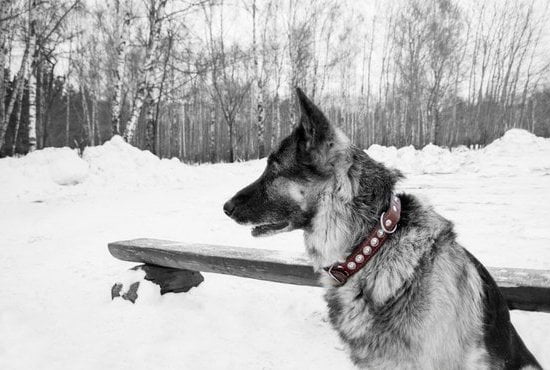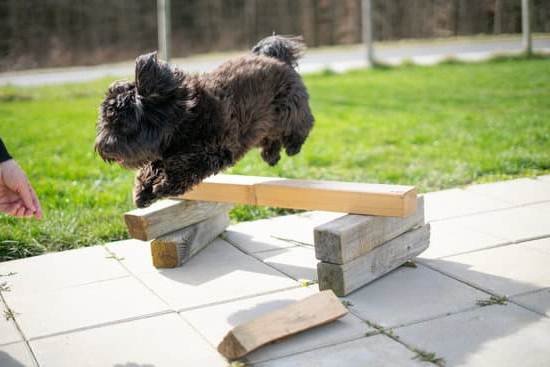How To Train A Dog To Be A Service Animal
There are many ways to train a dog to be a service animal. Some people use treats, others use positive reinforcement, and still others use aversive conditioning. However, the most common and effective way to train a service animal is with positive reinforcement.
Positive reinforcement involves rewarding the dog for good behavior with treats, praise, or petting. This type of training is very effective because it teaches the dog that good behavior earns rewards, while bad behavior does not. As a result, the dog is more likely to behave well.
Aversive conditioning, on the other hand, involves punishing the dog for bad behavior. This type of training is not as effective as positive reinforcement, because it can cause the dog to become scared or anxious. As a result, the dog may be more likely to behave badly.
Ultimately, the best way to train a service animal is with positive reinforcement. This type of training is effective, safe, and humane.
Can You Owner Train A Service Dog
There is a lot of misinformation out there about service dogs. One common misconception is that you have to be a professional dog trainer in order to raise and train a service dog. This is not true. You can owner train your service dog.
There are a few things to keep in mind when owner training a service dog. First, it is important to start training your dog as early as possible. Puppyhood is the best time to start training because dogs are most receptive to learning new things during this stage of their lives.
Second, it is important to be consistent with your training. Dogs need clear rules and boundaries in order to learn what is expected of them. Be sure to praise your dog for following commands and provide treats as a reward.
Third, be patient. It may take some time for your dog to learn all the commands necessary to be a service dog. Be persistent and keep practicing until your dog has mastered the desired behaviors.
Fourth, be prepared to work with your dog on a daily basis. Service dogs require a lot of training and practice in order to be successful. You may need to dedicate an hour or more each day to working with your dog.
If you are willing to put in the time and effort, you can owner train your service dog. It will require dedication and patience, but it is definitely doable.
How To Train A Service Dog For Anxiety Attacks
There are many ways to train a service dog for anxiety attacks, but the most important part of the process is to be consistent and patient.
The first step is to identify the warning signs that your dog is about to have an anxiety attack. Some common warning signs include panting, whining, pacing, and drooling. Once you have identified the warning signs, you can begin to train your dog to respond to them.
One way to do this is to use a cue word or sound. When your dog starts to exhibit the warning signs, say the cue word or sound and then provide them with a treat or a toy. This will help your dog to associate the cue word or sound with a positive experience and will help them to calm down.
It is also important to be patient and consistent with your training. It may take some time for your dog to respond to the cue word or sound, but with patience and persistence, they will eventually learn to calm down when they hear it.
What Age Do You Start Training A Service Dog
There is no definitive answer to this question since training a service dog can start at any age. However, it is typically recommended that you begin training a service dog when they are around six months old.
Training a service dog is a process that takes time and patience, and it is important to start early so that the dog can develop the necessary skills. In addition, puppies are more receptive to training at a young age than adult dogs.
There are a variety of tasks that a service dog may be trained to perform, such as helping a person with blindness or diabetes to manage their health, or providing assistance to someone with a physical disability.
The training process for a service dog can be challenging, but it is definitely worth it in the end. With the help of a well-trained service dog, many people with disabilities are able to live more independent lives.
How To Have Your Dog Trained As A Service Dog
There are many benefits to having your dog trained as a service dog. Not only does it provide companionship and emotional support, but it can also be a valuable asset in assisting with various tasks and activities. If you are considering having your dog trained as a service dog, there are a few things you should know.
First, it’s important to understand that not all dogs are suited for this type of training. In order for a dog to be a successful service animal, it must be well-trained, obedient, and have a good temperament. Dogs that are hyperactive, aggressive, or fearful are typically not good candidates for service dog training.
If you think your dog might be a good candidate for service dog training, the first step is to contact a qualified professional. There are many organizations that offer service dog training, and it’s important to choose one that is reputable and has a lot of experience. The organization should also be accredited by the Assistance Dogs International (ADI).
The training process itself can be quite expensive, but there are a number of ways to offset the cost. Many employers offer tax credits for service dog expenses, and many states also have laws that allow people with disabilities to take their service dogs into public places such as restaurants, stores, and hospitals.
Once your dog has been successfully trained as a service animal, it will be able to provide a wide range of assistance to its owner. Some common tasks that service dogs are trained to do include retrieving items, opening doors, and providing emotional support. Service dogs can also be trained to perform specific tasks related to a person’s disability. For example, if a person has a disability that affects their mobility, the dog might be trained to help them get around.
If you’re considering having your dog trained as a service animal, it’s important to do your research and find a reputable organization that can help. The benefits of having a service dog can be life-changing, and with the right training, your dog can be an invaluable asset.

Welcome to the blog! I am a professional dog trainer and have been working with dogs for many years. In this blog, I will be discussing various topics related to dog training, including tips, tricks, and advice. I hope you find this information helpful and informative. Thanks for reading!





